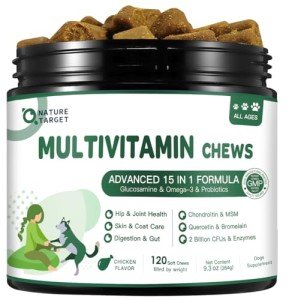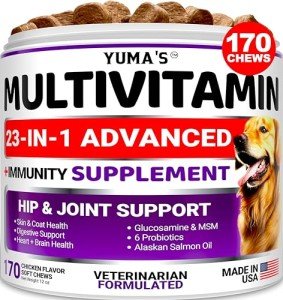Ticks pose a significant threat to our furry friends, and understanding the risks is essential for pet owners. Ticks are small, blood-sucking parasites that can attach themselves to your dog, potentially leading to various health issues. These pests are most active in warm weather, making tick treatment for dogs especially important during spring and summer months when dogs spend more time outdoors.
When a tick bites your dog, it can transmit harmful diseases such as Lyme disease, Rocky Mountain spotted fever, and ehrlichiosis. These conditions can lead to symptoms ranging from mild fever and pain to severe complications that can impact your dog's overall health and well-being. Regular tick treatment for dogs not only helps to protect them from these harmful diseases but also ensures they remain happy and active.
It's vital to know where ticks are commonly found. Wooded areas, tall grass, and even your own backyard can harbor these pests. After a day out exploring, make it a habit to check your dog thoroughly for ticks. Pay close attention to areas like the ears, neck, and paws. If you find a tick, it’s important to remove it promptly and correctly to minimize risks associated with tick bites.
Taking proactive measures with proper tick treatment for dogs can make all the difference. Consult your veterinarian to find the best products and methods suited for your pet. From topical treatments to oral medications, being informed about your options will help you protect your furry friend from ticks and the diseases they carry. Staying vigilant and taking action against ticks ensures your dog enjoys a healthy and happy life.
Choosing the Right Tick Prevention
When it comes to tick treatment for dogs, choosing the right prevention method is crucial. Ticks can pose serious health risks not only to dogs but to humans as well. With numerous options available on the market, it can be overwhelming to decide which is best for your furry friend. Understanding how different tick prevention methods work can help you make an informed choice.
The first step in selecting the right prevention is to assess your dog's lifestyle. If your dog spends a lot of time outdoors, especially in wooded or grassy areas, a more proactive approach may be necessary. Options like topical treatments, tick collars, and oral medications can provide ongoing protection. Topical treatments generally offer long-lasting effects and can kill ticks on contact, while collars can provide a continuous defense, making them convenient for dogs who are always on the go.
It’s also important to consider your dog's age, size, and health condition. Some tick treatment for dogs may be formulated specifically for puppies or dogs with certain health issues. Always read labels carefully and consult your veterinarian to ensure you choose a product that's safe for your pet. In some cases, a combination of methods, such as using a tick collar along with regular topical treatments, can enhance effectiveness.
Lastly, remember to establish a regular check-up routine for your dog. Even with prevention in place, it's wise to check your pet for any ticks after outdoor activities. Early detection can make a significant difference in your dog's health. By staying informed and proactive about tick treatment for dogs, you can help protect your furry friend from these pesky pests and the diseases they carry.
Administering Tick Treatments Safely
When it comes to administering tick treatment for dogs, safety should always be a top priority. Whether you're using topical treatments, oral medications, or natural remedies, it's essential to follow the instructions provided by the manufacturer closely. This ensures that your dog receives the correct dosage and minimizes the risk of any potential side effects. Always read the label carefully and consult your veterinarian if you have any questions or concerns about the appropriate treatment for your dog's specific needs.
Before applying any tick treatment for dogs, make sure to prepare the area. Choose a clean, quiet space where your dog feels comfortable. If you're using a topical treatment, have a towel or cloth handy to catch any drips. It's also a good idea to wear gloves to prevent any product from transferring to your skin. Always keep the product out of reach of children and other pets to avoid accidental ingestion or exposure.
Post-application care is just as important as the application itself. After administering tick treatment for dogs, monitor your pet for any signs of an adverse reaction, such as excessive drooling, vomiting, or unusual behavior. If you notice any concerning symptoms, contact your veterinarian immediately. Additionally, it's wise to keep your dog away from water for a couple of days after applying topical treatments to allow the medication to fully absorb and take effect.
Recognizing Signs of Tick Infestation
When it comes to keeping your furry friend safe and healthy, recognizing the signs of tick infestation is crucial. Ticks can carry diseases that affect both dogs and humans, making it essential to be vigilant. One of the first signs to watch for is excessive scratching or grooming. If your dog is constantly pawing at their skin or seems unusually itchy, it might be time to examine their coat for ticks.
Another indication of a tick infestation is the presence of small, dark spots on your dog's skin. Ticks can be easy to overlook, especially when they’re engorged. They may resemble small bumps or growths. Take the time to carefully inspect your dog’s ears, paws, and between their toes, as these are common hiding spots for ticks. If you spot any, you'll need to act quickly to initiate tick treatment for dogs.
Additionally, if your dog is showing signs of lethargy or loss of appetite, this can be another alarming sign. While many factors can contribute to a change in behavior, a tick-borne illness might be a possibility. It's important to consider recent activities, such as walks in grassy or wooded areas, which can increase exposure to ticks. Always keep an eye out for any behavioral changes so you can address potential tick issues promptly.
Finally, if you find ticks on your dog or notice any worrying symptoms, consult your veterinarian immediately. They can provide the best advice on tick treatment for dogs, as well as recommend preventative measures. Keeping your dog protected from ticks not only ensures their well-being but also helps prevent the spread of ticks in your home.




